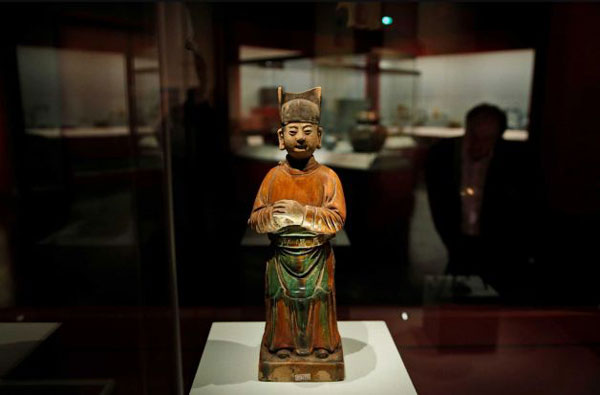British Museum explores prosperous period in Chinese history

 0 Comment(s)
0 Comment(s) Print
Print E-mail CNTV, September 18, 2014
E-mail CNTV, September 18, 2014
Intricate, inventive and ahead of their time - and that's just the vases. London's British Museum is unveiling its latest exhibition, an exploration of a pivotal period of Chinese history while under the rule of the Ming Dynasty. Between 1400 and 1450, China's emperors established Beijing as the state's new capital city while treasure ships explored the seas.
 |
|
Intricate, inventive and ahead of their time - and that's just the vases. London's British Museum is unveiling its latest exhibition, an exploration of a pivotal period of Chinese history while under the rule of the Ming Dynasty. |
From gilded bronze gods to intricate Buddhist paintings, London's British Museum is stepping back around 600 years into the past, to the Ming Dynasty. And it shows an important 50-year period in a new light.
It wasn't until the early 1500's that the Portuguese and Spanish began to trade directly with China. But rather than over-emphasising the impact of Europe, as many have done before, this exhibition shows how global China was about a hundred years prior.
By the 1500s, European trade was a tiny fraction in terms of what China was involved with at the time.
This iron sword is thought to be one of the most beautifully and technically intricate weapons to survive from the early Ming Period. It was commissioned by the Yongle Emperor and is inscribed with the words "Precious Sword" in Tibetan.
"It's a new look at Chinese history. A look at fifty-years in the early Ming dynasty from about 1400 to 1450 and it shows all aspects of court culture at that time," Exhibition co-curator Jessica Harrison-Hall said.
|
|
|
Intricate, inventive and ahead of their time - and that's just the vases. London's British Museum is unveiling its latest exhibition, an exploration of a pivotal period of Chinese history while under the rule of the Ming Dynasty. |
A system of multiple courts existed across China during the 50-year period, while four different emperors ruled the throne. It was the first of those, named Yongle, that moved the state's capital from Nanjing to Beijing, with the Forbidden City at its heart.
"The capital gets established at Beijing with the Forbidden City at its heart. And a system of multiple courts exists across China, and also voyages are sent by the Ming emperors to South East Asia, the Middle East and the east coast of Africa," Jessica Harrison-Hall said.
The exhibition features numerous porcelain pieces which demonstrate China's influential contact with the rest of the world.
According to Harrison-Hall it was during this period that the finest blue and white porcelain was ever made, much finer than anything exported later in the 16th century.
Harrison-Hall says the objects and artefacts that have been gathered over this 50 year period truly bring the era to life.
"This early fifteenth century is a moment when you can actually bring all these things together and have a snapshot of what it was like to be in China in the early fifteenth century, before Columbus was even born," Jessica Harrison-Hall said.
"Ming: 50 Years that changed China" runs at London's British Museum from September 18th to January 5th next year.







Go to Forum >>0 Comment(s)